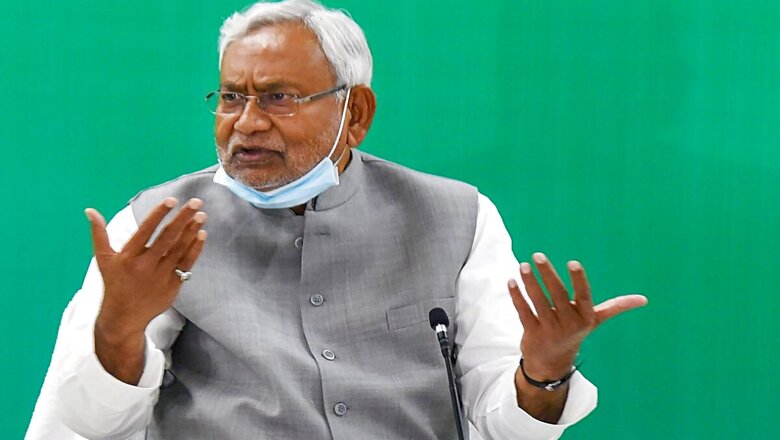
views
After winning the assembly elections, the National Democratic Alliance (NDA) is set to form the government in Bihar. The result also threw up the Bharatiya Janata Party (BJP) as the biggest partner in the coalition. The implication is that chief minister and Janata Dal (United) leader Nitish Kumar’s upper hand in the NDA and Bihar politics is going to be challenged more and more in the coming days. Another message of the outcome is that from now Bihar politics will be centred on two political parties: the BJP and Rashtriya Janata Dal (RJD).
Most political observers were of the view before the results that there was deep anti-incumbency against the Nitish Kumar-led government. Yet, the NDA went on to secure a victory. What are the reasons for that? The first reason is that in the past few years, Narendra Modi, through his pro-poor government programmes, reached out effectively to the marginalised communities which was admired a lot by several sections of society, especially rural women. It helped the NDA recover from losses caused by stagnation and some amount of erosion of Nitish Kumar’s image. We observed during the election campaign that poor and lower-middle-class rural women had admiration for Narendra Modi due to the benefits they received from Ujjwala Yojana and other schemes initiated and implemented by the NDA ‘double-engine’ government. These women and Mahadalit communities emerged as silent voters for the NDA during this election.
Two ways to mobilise caste were observed in the Bihar polls— one, by forming identity-based caste alliances of various social groups through caste-based political parties; second, by using the strategy adopted by the Left parties that are trying to mobilise caste groups on economic lines. The result shows that identity-based mobilisation of castes is still more effective than mobilising them on a mixed class-caste-based line. The NDA tried to form caste alliances on the basis of identity-based parties. However, the RJD-led Mahagathbandhan tried to use a combination of caste-class-based sentiment in this election.
Issues like jobs attracted the youth voters, but we may consider that the youths are also more or less decided on the caste lines. So theie complete mobilisation could not be achieved by the RJD as strategised by Tejashwi Yadav and his party. So silent voters, like a section of women, a section of Mahadalits and most backward castes, worked silently for the NDA. It is true that the Yadav community and Muslims, the M-Y equation, worked well for the RJD, but it was not sufficient to form the government. There was a need to add other social and caste groups cohesively with the base vote of the Mahagathbandhan. But it is true that Tejashwi Yadav emerged as powerful future pole of Bihar politics.
The Bihar election 2020 in fact appeared to be an election of transition and the making of a new formation of new democratic politics in Bihar. The BJP and RJD are going to fight each other closely to gain ground in Bihar politics after 2020. The JD(U) may have to struggle to retain its base in the coming days.
(The author is professor and director of GB Pant Social Science Institute, Prayagraj. Views are personal)
Read all the Latest News, Breaking News and Coronavirus News here


















Comments
0 comment